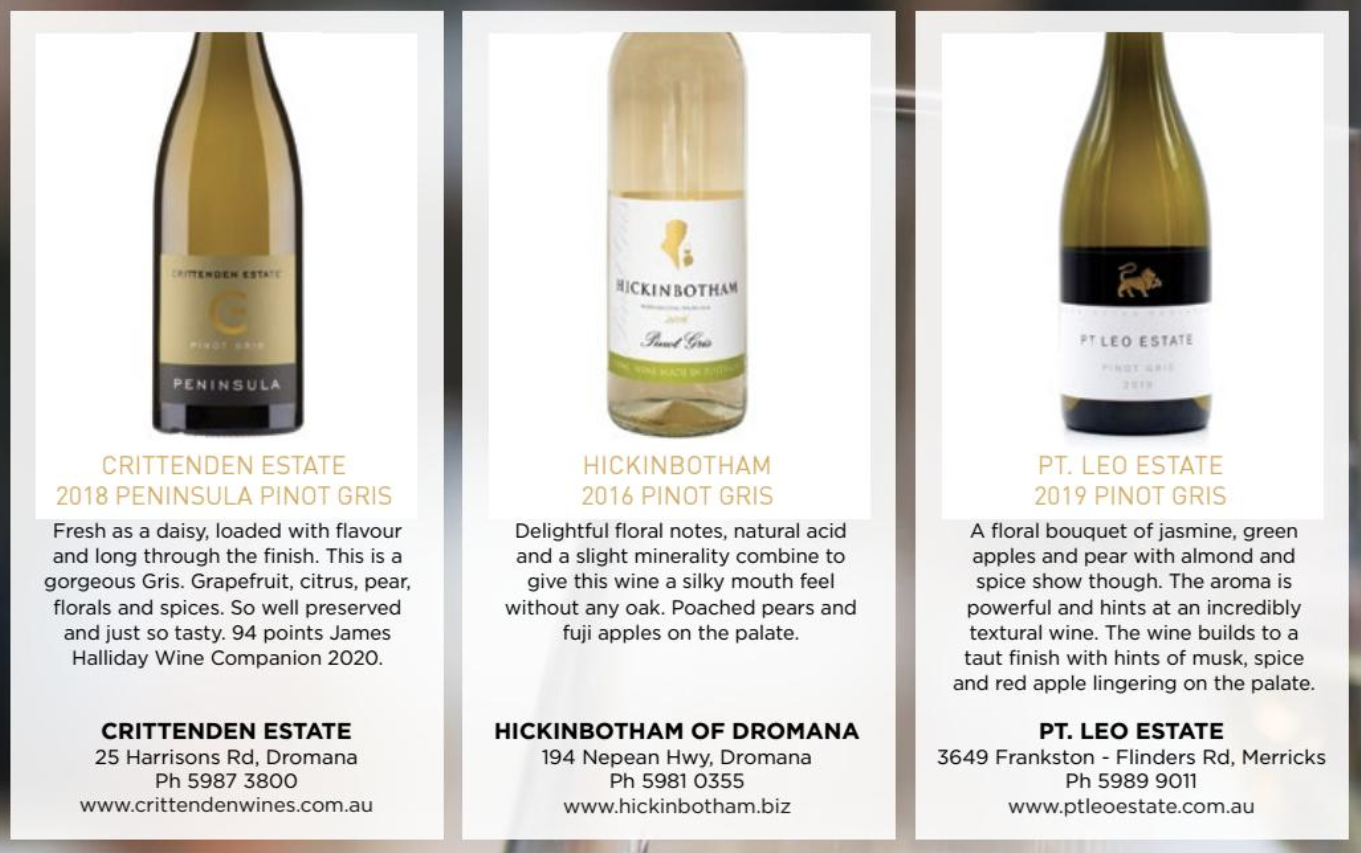There is Pinot Gris and then there is Pinot Grigio, but what if any, are the differences? A chat with Adam Walls and Dave Mavor from the “Wine Selectors” tasting panel to set the record straight.
“Pinot G is hugely popular with Australian wine-lovers, but there’s still so much confusion surrounding this fresh and fashionable white,” says Adam Walls, Tasting Panellist, Wine Show Judge, Wine Educator and 2019 Len Evans Tutorial Dux. “To put it simply, they are both made from the same grape variety, but are crafted to produce two different styles.”
“The grape variety is a member of the Pinot Noir family and has two different names thanks to the two countries in which it is most commonly grown: France and Italy,” explains Adam. “Across the two styles, the common aroma and flavour descriptors include apple, pear, strawberry, honey, brioche and nuts.”
Just to add to the confusion, across the wine world it also has several names: in Germany the grape is known as Grauburgunder, in the Loire and Switzerland, it’s called Malvoisie, it’s known as Pinot Beurot in Burgundy and in Hungary, it’s called Szurkebarát which means grey monk.
Must Try Pinot Gris
Must Try Pinot Grigio
PIÙ LEGGERO PINOT GRIGIO
The word Grigio is the Italian for “grey” and has made a name for being a light, crisp wine ideal for early drinking and is most famously known in the regions of Veneto and Friuli.
BONJOUR! IS IT GRIS YOU’RE LOOKING FOR?
Gris is French for “grey” and in France it finds its home in the Alsace region. French Pinot Gris is generally known for being a rich, full-bodied white with a smooth, silky texture.
AUSSIE PINOT G GOODESS
The variety was first introduced to the Hunter Valley with the James Busby collection of 1832. However, it wasn’t until the 1990s that it started to emerge.
AUSSIE WINE REGIONS PINOT G LOVES
In Australia, the cool climate regions of Mornington Peninsula, Tasmania, Adelaide Hills, Orange, King Valley and Great Southern have the ideal conditions to produce high quality fruit and that allow winemakers to experiment with styles. Cool climate winemaking has taken off since the 1970s, with the regions growing to now include 200 vineyards and brands both big and boutique.
Whether you choose a richer Gris or a zestier Grigio, or a mix of both, you can’t go wrong with Pinot G. Explore the diverse range to discover your new favourites.
*This is an excerpt from an article from www.wineselectors.com.au
The original article can be found at HERE
Cool Climate Wines
This variety of wine is made from grapes grown south of latitude 37.5 degrees south.
From a property in the southern hemisphere which has an average July temperature below 19.5 degrees Celsius, as confirmed by the nearest Bureau of Meteorology site, or a vineyard site above 400m in altitude.
These vineyards are exposed to concentrated sunlight and cooler air temperatures which allow for longer ripening periods producing better balanced wines with moderate alcohol levels. The lower temperatures and higher solar radiation at these various altitudes, make for more concentrated flavours in the wines as UV rays are better able to penetrate the skins of the grape and ripen the pips producing supple tannins.
Aromas and flavours in cool climate wines are complex and intense with the natural acidity bringing brightness and freshness. Cool climate wines are also better suited to match a wide range of foods due to medium bodied flavour profile which compliment your meal rather than overwhelm it.
Some grape varieties are better suited to high altitude vineyards than others. White varieties such as Chardonnay, Sauvignon Blanc and Pinot Grigio tend to be more delicate with crisp acidity, a lighter flavour body and typically show bright fruit flavours.


